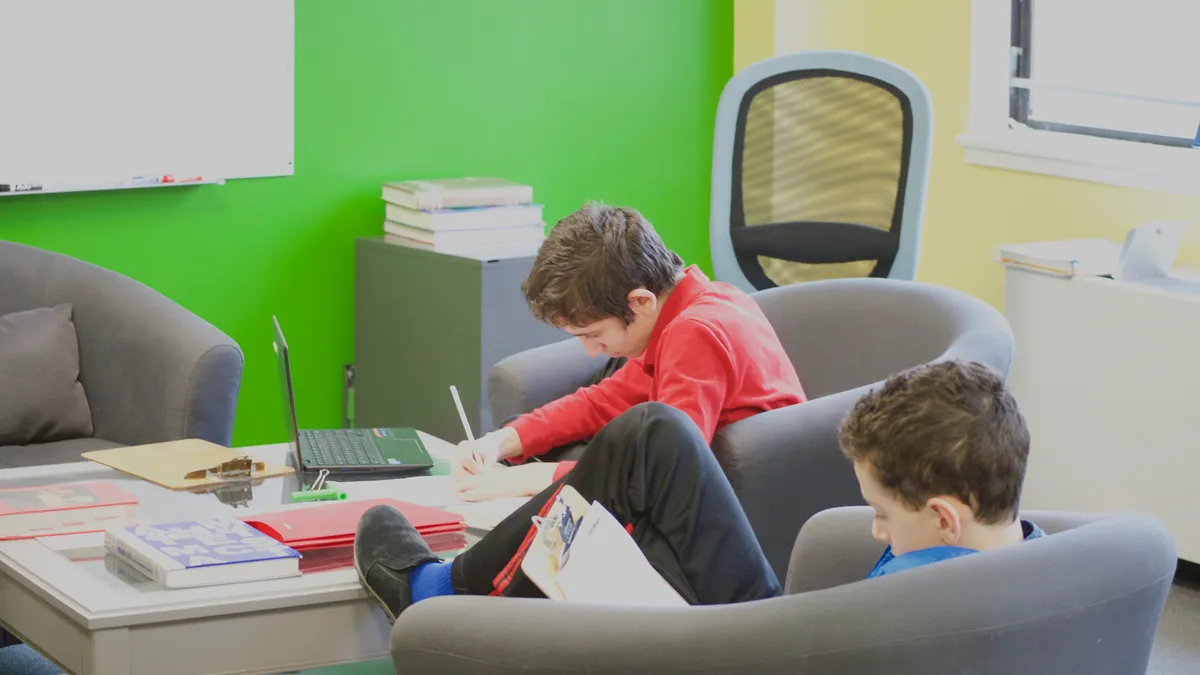Some argue the No Child Left Behind education law created a disincentive for innovation. Under intense pressure to steadily increase the portion of students meeting standards or face sanctions, many state and local educators found the risks of trying something new and failing to be too high.
Doug Mesecar, former deputy chief of staff of the U.S. Department of Education under George W. Bush and current vice president of strategic partnerships for IO Education, sees the Every Student Succeeds Act as a major shift in this area. Under NCLB, Mesecar says states had to beg for permission to try new things, while “ESSA is a beg for forgiveness kind of law.” States have more freedom to innovate, even if the federal government still aims to hold them accountable.
“It has really changed the conversation pretty dramatically in a short period of time,” Mesecar said.
One area where states and districts may take advantage of this flexibility is personalized learning. The idea of tailoring instruction to the needs and desires of individual students has become particularly popular in recent years in part because of new technology tools that help facilitate such individualized attention. Federal law mentions blended learning more than personalized learning, but creating space for part-time, online instruction opens the door for the online portion to be highly personalized.
New Jersey, for example, was among those to highlight personalized learning in its ESSA plan that now awaits federal approval. Among other things, the state is prepared to offer professional development to teachers related to personalized learning and it may set aside up to 3% of Title IA funds to offer competitive grants to districts for services including personalized learning.
Mesecar said ESSA’s expanded focus from one that prioritizes grade-level proficiency to one that has a long-term goal of college and career readiness also makes room for tailored instruction. Grade-level proficiency is still important, but a broader growth trajectory that acknowledges students move toward college and career readiness at different speeds is key. More states are emphasizing five- and six-year graduation rates to give students who need it more time to accumulate credits and amass the experiences they need to be prepared for life after high school.
On the other side of the spectrum, Mesecar points to the growing number of schools that invite students to accelerate the traditional four-year high school experience and move on to college and career experiences sooner.
Still, simply having innovation-friendly policies in place won’t inherently lead to district- or school-level action. Many districts are committed to existing practices because tradition is powerfully convincing. But Mesecar encourages a broad re-thinking of the traditional approach and a sharp move away from a risk-averse mindset that took hold under NCLB. He says schools have to “flip the equation” and stop fearing change.
“We’ve actually got to fear not changing, because what we’ve been doing is just outdated,” Mesecar said.
In New Hampshire, a leader in personalized learning as well as a strong proponent of local control, the New Hampshire Department of Education is poised to release guidance that pushes administrators to take advantage of ESSA’s fourth evidence level, creating their own interventions and then documenting how they work. Christopher Motika, the department’s Title I director, said the department recognizes that teachers and leaders have great ideas.
“We want to honor those things and help create the research base,” Motika said, emphasizing the possibilities for personalization and project-based learning.
Even beyond flexibility offered by ESSA, several states seem to be moving forward with more strategic personalized learning plans. Virginia, for example, now allows “School Divisions of Innovation.” This designation makes schools eligible for waivers from specific education requirements, like staffing, that can get in the way of personalized learning initiatives.
In New Hampshire, the Department of Education has created supports for schools that are ready to explore personalized learning, but it has not forced districts to innovate. Motika said even though research has made the value of personalized learning clear, districts are encouraged to respond to local contexts and develop solutions that make sense for their own populations.
For administrators that haven’t necessarily been invited to innovate by their own state education leaders, Mesecar recommends stepping away from the compliance mentality. Regulations and funding requirements are loosening up. And where there seem to be barriers to certain initiatives, administrators can make the extra effort to seek waivers.
“The risk/reward ratio has never been better when you’re thinking about innovating in districts,” Mesecar said.

















